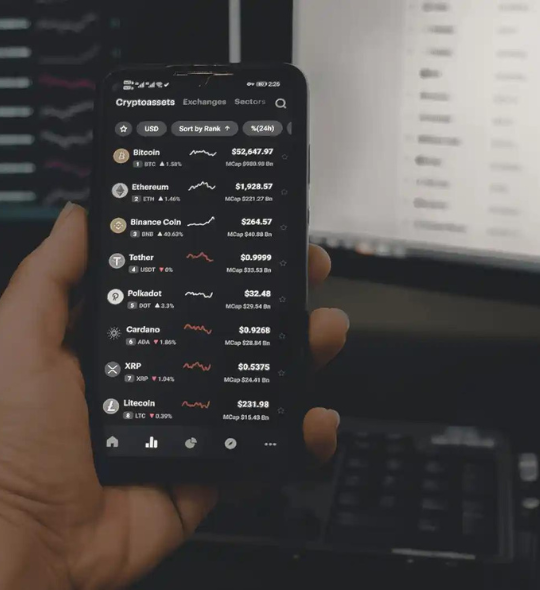
Blockchain could create a more decentralized, robust, and secure grid for the 21st century.
TL;DR
-
Blockchain can be used to support local microgrids, improve community resiliency, and allow peer-to-peer energy sales.
-
‘Smart contracts’ that signal the wider system when to initiate transactions can be created with blockchain, and the technology can also tie together siloed assets and automate energy and storage flows.
-
Private blockchain initiatives are hindered by the lack of an effective governance system, so trust ultimately falls back onto central authorities, rather than the blockchain itself.
If you’ve heard of blockchain it will most likely have been in connection to the financial sector and the rise of cryptocurrencies like Bitcoin, but did you know that blockchain is also being used to modernize and disrupt the energy sector?
Before we delve into how blockchain impacts the grid, let’s make sure we are all on the same page by taking a quick detour to explain what blockchain actually means.
What is blockchain?
Blockchain is a peer-to-peer (P2P) networking technology that allows users to deal directly with one another without the need for time-consuming and expensive intermediaries. Simply put, blockchain is an electronic ledger that can be accessed and managed by anyone using the system, although entries cannot be modified after they are created.
This ledger is decentrally stored and each user has a copy of all transactions, in the form of a continually expanding list. This means that instead of just the buyer and seller having a ‘receipt’, everyone does, which prevents tampering by either party (or a third party).
How does it work?
Transactions made during the same period are bundled together to make data blocks, which are then given a unique ID based on which transactions (and how they are arranged) make up the block.
Think of it like music, where the data block is a song and the component transactions are the notes. The type and order of the notes in turn defines the song and gives it a unique signature or ID.
If you add or remove notes they no longer compose the same song. And even if all the same notes are present but are arranged in a different order, the song is no longer recognizable, despite containing the same constituent elements.
Once transactions have been bundled into a block, it is decentrally stored and verified by the computers using that blockchain system.
Once it has been verified, this block is added to the chain of previously verified blocks (hence ‘blockchain’) and all users receive an updated description of the blockchain, which now includes this most recent addition.
How does blockchain play into the energy sector?
The push for more decentralized electricity grids which incorporate distributed renewables and local storage can benefit from blockchain integration.
As distributed energy sources increase their market penetration, microgrids can use blockchain to help combat inefficiencies such as congestion, volatile price formation, and losses from transmission. For instance, blockchain can provide a transparent platform where customers can monitor energy prices and adapt and diversify their energy portfolios.
According to a report by Deloitte, blockchain could also “[…] supplant major transmission intermediaries by facilitating the coordination and delivery of power across broad geographies on a low-cost and automated basis.”
In April 2016, the Brooklyn Microgrid used blockchain to sell decentrally generated energy from neighbor to neighbor for the first time. Local community members generate and store energy via solar panels and electric vehicles (EV), creating a localized marketplace for transacting energy over the existing grid infrastructure.
Blockchain can be used to enable transparency and accountability for regulatory compliance, reporting, and green energy verification (e.g., guarantees of origin, emission trading allowances). You could also use blockchain to simplify billing models for EVs by automatically billing users for energy, according to PWC.
“[…] the cryptocurrency and tokenization approach is offered as an alternative to more traditional renewable energy power purchase agreements.”
Blockchain can also make it easier for small energy producers to enter the market, as they can interact directly with end users. South African firm Sun Exchange uses blockchain to allow users to invest in solar panels anywhere in the world, helping crowdfund renewable energy generation for high-impact projects in developing countries, with returns based on the share of contributed funds.
Stephen Woodhouse, Chief Digital Officer at Pöyry – a consulting firm focusing on energy, infrastructure, and industry – explains that “the cryptocurrency and tokenization approach is offered as an alternative to more traditional renewable energy power purchase agreements.”
Creating ‘smart contracts’ which signal to the system when to initiate which transactions, is another possibility with blockchain. This would allow energy generation and storage flows to be controlled automatically to balance the supply / demand equation, such as automatically diverting excess energy to storage facilities.
Wired reported in 2018 that WePower was beginning work in Estonia to implement a blockchain-based green energy financing and trading platform.
Through WePower’s platform and its Ethereum Smart Energy contract tokens, industrial and commercial end users can directly deal with energy producers and secure electricity at below market rates.
Estonia is an ideal test bed (the company also operates in Lithuania, Australia, Spain) because the country has a 100% digital grid, due to universal smart meter coverage, which allows WePower to link energy consumption and production data to the blockchain.
The benefits of blockchain include asset optimization across siloed industries and compliance monitoring along the entire supply chain.
One overlooked facet is the potential for blockchain to create a standard data and reporting format across key areas of industry, something that is currently lacking. The challenge is in convincing companies to formulate a common vision, adopt common standards, and use a common platform. Other challenges include designing a governance framework in the highly regulated energy industry to ensure security concerns are addressed.
Public blockchains are also very inefficient for micro transactions due to ledger multiplication. Rapidly changing regulations in the energy sector also hinder the adoption of public blockchains as there is no effective governance system.
Private blockchains solve some of these problems, but trust ultimately ends up falling back on central authorities and not the blockchain itself.





